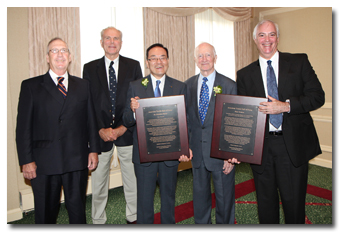Hardly ever in the history of modern Europe has a decision been as eagerly anticipated as the
judgment of the German Federal Constitutional Court regarding the European Stability Mechanism
(ESM). On September 12, the court announced that it has rejected the urgent request of several
plaintiff groups to abolish the ESM. The mechanism shall enter into force, however, under some
rigorous conditions.
A decision to block ratification of the ESM would have had unforeseeable consequences for the
eurozone in particular, but, without any doubt, would also send severe shock waves through the
global financial system and, consequently, would impact the global textile and textile machinery
industry. The problems with the European financial situation and its influences on the global
textile industry in general, and on the Asian textile industry in particular, have been discussed
in different Rupp Reports over the past few weeks.
European Stability Mechanism
In the Treaty Establishing the European Stability Mechanism (ESM), the following is stated:
- The European Council agreed on 17 December 2010 on the need for euro area Member States to
establish a permanent stability mechanism. This European Stability Mechanism (“ESM”) will assume
the tasks currently fulfilled by the European Financial Stability Facility (“EFSF”) and the
European Financial Stabilization Mechanism (“EFSM”) in providing, where needed, financial
assistance to euro area Member States.
- On 25 March 2011, the European Council adopted Decision 2011/199/EU amending Article 136 of the
Treaty on the Functioning of the European Union with regard to a stability mechanism for Member
States whose currency is the euro adding the following paragraph to Article 136: “The Member States
whose currency is the euro may establish a stability mechanism to be activated if indispensable to
safeguard the stability of the euro area as a whole. The granting of any required financial
assistance under the mechanism will be made subject to strict conditionality.”
Germany Is The Top Payer
The ESM should completely replace its temporary predecessor, the EFSF, in mid-2013. Its
registered capital will total 700 billion euros, but no more than 500 billion euros may be assigned
in loans.
Germany’s liability for the ESM totals 27 percent in accordance with its capital share in the
European Central Bank (ECB). However, critics fear that the German liability could be even higher.
Germany, the largest member state, hasn’t yet ratified the ESM treaty. Without its
participation, the ESM can’t go into effect. The German association More Democracy, with more than
37,000 people, brought an action to block Germany’s ratification of the ESM and spare the country
from taking on “unlimited and irreversible liability risks.”
Difficult Decision
The final countdown is now starting: As the Chief Judge Andreas Vosskuhle explained, the
ratification process and the signing of the treaty by the German president can only be executed if
international law guarantees that Germany’s liability in the ESM is not more than 190 billion
euros. This limit can only be changed by the German parliament.
More Power For The Parliament
The chief judge explained in his verdict that the responsibility of the high court is
limited, and they had only to judge whether the treaty complies with German law, saying “the
appropriateness and reasonableness of the ESM must be decided by the German parliament.” He also
said that “even in an intergovernmental system of governance, the elected members of the German
parliament as representatives of the people must keep control over basic decisions on the budgetary
policy.”
Chancellor Merkel Satisfied
For German Chancellor Angela Merkel and her center-right coalition government, and to some
extent also for the docile opposition – the left-wing Social Democratic Party and the Greens, the
verdict comes as a great relief. A ruling from the court in favor of blocking the ESM ratification
would have jeopardized the euro rescue program, which was negotiated with painstaking diplomacy. If
German President Joachim Gauck signs the treaty by the end of June, Merkel can carry on her policy,
which she thinks is the right and only way. However, the 190 billion euro liability will drive the
German deficit to new heights. Serious news networks reported a few days ago that the deficit is
now 2 trillion euros.
A Good Idea — In The Beginning
As everybody knows, this European crisis is throwing a lot of shadows on the global economic
system because of its uncertainty. For the same reason, dark clouds are hanging over the global
textile industry. As some major textile machinery suppliers have confirmed repeatedly, there are
projects everywhere, but everybody is holding back on these projects. In the 1990s, when all these
European ideas and projects came into being, they all looked pretty good. Europe reached a state of
political stability and economic dynamism. But the economic integration of Europe, which was at the
time associated with building the internal market and increased permeability of the borders, was
not enough for the elite of European politicians. With the subsequent actions to integrate all
kinds of duties into one pot, the idea broke apart and brought on the current situation, affecting
the social and economic life and the long-term prospects of the EU.
A Relief For Europe
The German approval of the ESM was of utmost importance for the euro crisis management.
Without this green light from the main financial backer of the fund, the ESM could not be
implemented at all, which could have led to an even more profound crisis in the eurozone.
Currently, the financial resources of the temporary bailout fund, the EFSF, will soon be exhausted
– after reform programs for Greece, Ireland and Portugal have swallowed around 200 billion euros,
plus another 100 billion for Spain.
Banks Never Lose
Immediately after the verdict of the high court, the German stock index (DAX) rose
considerably, as did the value of the euro, which rose to US$1.29. It seems that the financial
players don’t bother too much about the restrictions. Obviously, these people are not interested in
sustainability and sincere reforms – they are more interested in the next cash injections.
All over Europe, the citizens are not happy with the situation, but they are not asked for
their opiniosn. On one blog, a German citizen wrote, “we’ll get Mediterranean relations, easy use
of money and loans. Overall, we get what no one in this country wanted to have.”
September 18, 2012






